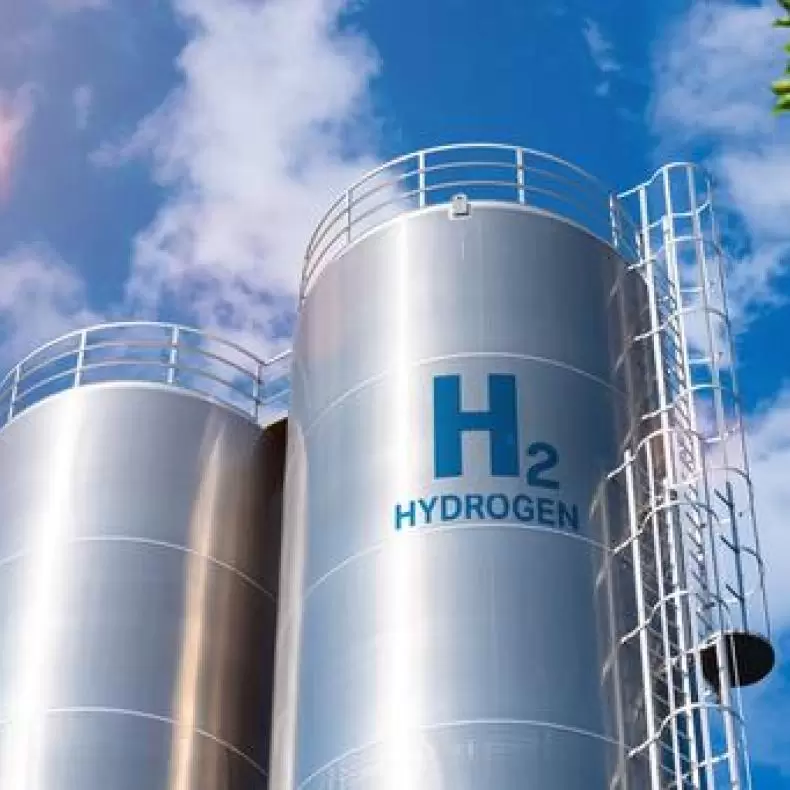New technology can catch hydrogen leaks, protect climate as industry booms
The world’s biggest green hydrogen project — which will extract pure hydrogen from water using renewable electricity — recently broke ground in China. Hydrogen fuel cells that can power trucks are being manufactured in upstate New York. Around the world, hundreds of billions of dollars in public and private investment are poised to flow into nearly 700 proposed hydrogen projects.

Companies and governments have high hopes for hydrogen as a potential clean energy source. But experts caution there are considerable challenges to making hydrogen climate-positive.
For one, most pure hydrogen today is extracted from fossil fuels and releases carbon dioxide as a byproduct. Current hydrogen production would be the world’s fourth largest source of CO2 emissions, if it were a country.
And there’s another, less well-known problem: Hydrogen gas itself can pose a threat to the climate. It can have a powerful warming effect, and it leaks easily — two critical facts that are often overlooked in the race to build out hydrogen energy.
“If hydrogen is going to deliver what its backers promise,” says Environmental Defense Fund scientist Ilissa Ocko, co-author of a recent study on hydrogen’s climate impacts, “we need to keep it from escaping into the atmosphere.”
That task is easier said than done. But a recent breakthrough suggests hope is on the horizon.
The challenge of hydrogen leaks
Hydrogen is an indirect greenhouse gas which means that when it leaks, it creates a chain of chemical reactions that increases the amount of greenhouse gases, like methane, in our atmosphere. Pound for pound, hydrogen's warming potential is about 40 times greater than carbon dioxide in the first 20 years after its release.
- Hydrogen: Climate hype or hope?
- Hydrogen goes to Hollywood: A climate scientist unpicks Glass Onion's clean energy claims
According to research by Ocko and colleagues, published in Atmospheric Chemistry and Physics, a multitude of hydrogen leaks at a global scale could undermine the climate benefits that hydrogen is supposed to provide.
But there’s almost no real-world data on hydrogen emissions, in part because the technology to measure them doesn’t exist. Hydrogen is a tiny molecule, odorless and invisible, even to infrared cameras. Hydrogen sensors today are designed for safety: they’re used to alert people to the presence of a large, potentially explosive hydrogen leak. They lack the speed and sensitivity required to detect and measure smaller leaks of hydrogen wafting through the air.
As the world looks to hydrogen energy as a climate solution, the lack of data on hydrogen leaks has become a critical issue.
Breakthrough technology
Fortunately, new technology is on the horizon. A novel hydrogen sensor developed by Aerodyne Research was able, for the first time, to measure a small hydrogen leak.
In an experiment designed by EDF scientist Tianyi Sun, in collaboration with Aerodyne and Cornell University, scientists drove the new sensor in a specially equipped research van over a grassy test site dotted with oil and gas equipment, where a pipe was releasing tiny amounts of hydrogen.
Within seconds, the sensor detected tens of parts per billion of hydrogen wafting through the air, representing a breakthrough in hydrogen emissions detection.
On its own the quantity of leaked gas was not significant. But replicated across thousands of facilities and miles and miles of pipelines, such leaks could add up to undermine the climate benefit that makes hydrogen so appealing in the first place.
“Now that we know it works, we can take this instrument to real-world facilities like fertilizer plants, or hydrogen fueling stations, and measure how much hydrogen is escaping day to day,” says Sun. “Right now, we know very, very little about how much hydrogen leaks. And filling that gap in our understanding is critically important for the climate.”
EDF says that minimizing leaks, through good engineering, regular inspections and producing hydrogen close to where it’s used, should be a key consideration in any hydrogen project. The group is also urging industry leaders to get involved in research efforts.
“There’s a lot more to learn about hydrogen emissions,” says Sun. “And the clock is ticking.”


